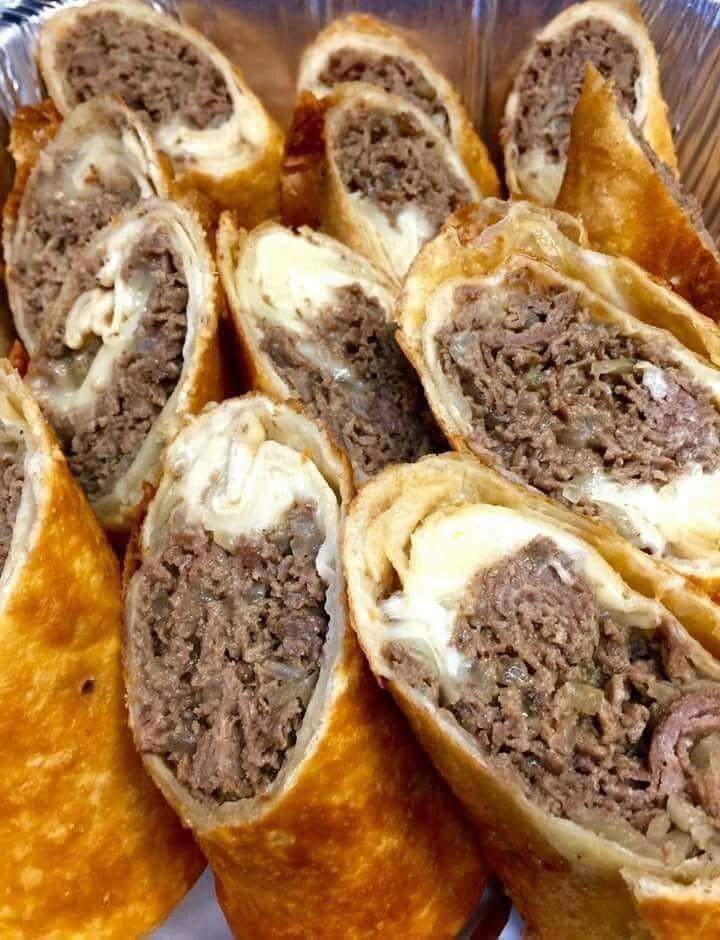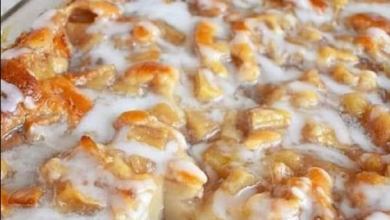
Advertisement
Introduction
Crunchy on the outside, savory on the inside, Philly Cheesesteak Egg Rolls are a delightful twist on the classic Philly Cheesesteak sandwich. Imagine the mouthwatering combination of tender steak, gooey cheese, and flavorful veggies, all wrapped up in a crispy egg roll wrapper. Are you ready to embark on a culinary adventure that will tantalize your taste buds?
Table of Contents
| Sr# | Headings |
|---|---|
| 1. | What Are Philly Cheesesteak Egg Rolls? |
| 2. | Ingredients Needed |
| 3. | How to Make Philly Cheesesteak Egg Rolls |
| 4. | Tips for Perfect Egg Rolls |
| 5. | Serving Suggestions |
| 6. | Where to Find Philly Cheesesteak Egg Rolls |
| 7. | Health Considerations |
| 8. | Vegan and Vegetarian Options |
| 9. | History of Philly Cheesesteak |
| 10. | Why Philly Cheesesteak Egg Rolls Are Popular |
| 11. | FAQs About Philly Cheesesteak Egg Rolls |
What Are Philly Cheesesteak Egg Rolls?
Philly Cheesesteak Egg Rolls are a fusion of two beloved culinary traditions: the iconic Philadelphia Cheesesteak and the crispy egg roll. Instead of the traditional hoagie roll, the ingredients of a Philly Cheesesteak are wrapped in a thin egg roll wrapper and deep-fried to golden perfection. This unique combination results in a delicious appetizer or snack that packs a flavorful punch.
Ingredients Needed
To whip up a batch of homemade Philly Cheesesteak Egg Rolls, you’ll need the following ingredients:
- Steak: Thinly sliced ribeye or sirloin steak works best for an authentic Philly Cheesesteak flavor.
- Cheese: Provolone cheese is the classic choice, but you can also use American or mozzarella for a creamy texture.
- Bell Peppers and Onions: Sautéed until caramelized for that signature Philly Cheesesteak taste.
- Egg Roll Wrappers: Available in the refrigerated section of most grocery stores.
- Oil: For frying.
- Salt and Pepper: To season the filling to taste.
How to Make Philly Cheesesteak Egg Rolls
- Prepare the Filling: Sauté thinly sliced steak, bell peppers, and onions in a skillet until the steak is cooked through and the vegetables are tender.
- Assemble the Egg Rolls: Place a spoonful of the steak and veggie mixture onto an egg roll wrapper. Top with a slice of cheese.
- Roll ‘Em Up: Fold the sides of the wrapper over the filling, then roll from the bottom up, sealing the edge with a dab of water.
- Fry Until Golden: Heat oil in a deep fryer or skillet to 350°F (175°C) and fry the egg rolls until golden brown and crispy.
- Serve and Enjoy: Serve hot with your favorite dipping sauce, such as marinara, sriracha mayo, or sweet chili sauce.
Tips for Perfect Egg Rolls
- Slice Ingredients Thinly: Thinly sliced steak and veggies ensure even cooking and a well-balanced filling.
- Don’t Overfill: Overfilling the egg rolls can cause them to burst open during frying. Stick to a moderate amount of filling.
- Seal the Edges: Make sure to seal the edges of the egg rolls tightly to prevent the filling from leaking out.
- Keep an Eye on the Temperature: Maintain the oil temperature while frying to achieve a crispy exterior without burning.
- Serve Immediately: Philly Cheesesteak Egg Rolls are best enjoyed hot and fresh out of the fryer.
Serving Suggestions
Philly Cheesesteak Egg Rolls are versatile and can be served in various ways:
Advertisement
- Appetizer: Serve as an appetizer with dipping sauces for game day gatherings or parties.
- Main Course: Pair with a side salad or fries for a satisfying meal.
- Snack: Enjoy as a snack anytime you’re craving something savory and delicious.
Where to Find Philly Cheesesteak Egg Rolls
While homemade Philly Cheesesteak Egg Rolls are a treat, you can also find them at select restaurants and eateries, particularly those with a creative twist on classic comfort foods. Keep an eye out for them on appetizer menus or specialty food trucks.
Health Considerations
While undeniably delicious, Philly Cheesesteak Egg Rolls are not the healthiest option due to their deep-fried nature. Enjoy them in moderation as an occasional indulgence, and consider balancing your meal with lighter options such as a side salad or steamed veggies.
Vegan and Vegetarian Options
For those following a plant-based diet, you can still enjoy the flavors of Philly Cheesesteak Egg Rolls with a few substitutions:
- Vegan Steak: Use marinated and grilled portobello mushrooms or seitan strips as a hearty alternative to steak.
- Dairy-Free Cheese: Opt for vegan cheese slices or a homemade cashew cheese sauce for a melty, dairy-free option.
- Vegetarian Filling: Load up on sautéed bell peppers, onions, and mushrooms for a flavorful vegetarian filling.
History of Philly Cheesesteak
The Philly Cheesesteak sandwich originated in Philadelphia in the 1930s and has since become a beloved culinary icon. Traditionally, it consists of thinly sliced steak, melted cheese, and sautéed onions served on a hoagie roll. Over the years, various adaptations and spin-offs, including Philly Cheesesteak Egg Rolls, have emerged, each putting a unique twist on the classic recipe.
Why Philly Cheesesteak Egg Rolls Are Popular
Philly Cheesesteak Egg Rolls have skyrocketed in popularity due to their irresistible combination of flavors and textures. They offer a convenient way to enjoy the iconic taste of a Philly Cheesesteak in a fun and portable format. Whether you’re a fan of traditional cheesesteaks or simply looking to try something new, Philly Cheesesteak Egg Rolls are sure to satisfy your cravings.
FAQs About Philly Cheesesteak Egg Rolls
1. Can I make Philly Cheesesteak Egg Rolls ahead of time? Yes, you can prepare the filling ahead of time and assemble the egg rolls just before frying. Store any leftovers in an airtight container in the refrigerator and reheat in the oven for a crispy texture.
2. Can I bake Philly Cheesesteak Egg Rolls instead of frying them? While frying yields the crispiest results, you can bake the egg rolls in a preheated oven at 400°F (200°C) for about 20-25 minutes, or until golden brown and crispy.
3. Are Philly Cheesesteak Egg Rolls spicy? The level of spiciness can vary depending on the ingredients used. If you prefer a mild flavor, you can omit spicy seasonings or sauces from the
CLICK "NEXT" TO COMPLETE THE RECIPE >
CLICK "NEXT" TO COMPLETE THE RECIPE >




